Reading Time: 3 minutes Q: Do I have new opportunities in weed control in 2018? A: This is the question I’ve been asked a lot this past winter meeting season, and one I always struggle to answer. There are some legitimately promising concepts being tested such as robotic weeders (Figure 1 at top) and weed seed destruction tools, but […] Read more

Pest Patrol: New herbicide names may not mean new chemistry
#PestPatrol with Mike Cowbrough, OMAFRA
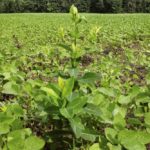
PHOTOS: Pest Patrol: Dealing with hemp dogbane
#PestPatrol with Mike Cowbrough, OMAFRA
Reading Time: < 1 minute Q: I’ve been battling hemp dogbane in my soybean fields. It produces a milky juice that can stain my beans. What can I do to knock back the top growth so it won’t affect crop quality? A: It’s good that your expectations are for top growth control of hemp dogbane (see figure 1), since it’s […] Read more
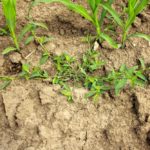
Pest Patrol: Tackling prostrate knotweed on today’s farms
#PestPatrol with Mike Cowbrough, OMAFRA
Reading Time: 2 minutes Q: How do I get rid of prostrate knotweed in each of my major crops? A: In Ontario, prostrate knotweed is more frequently found in Huron County and on Brookston clay-loam soils under no-till or minimum-till production systems (Frick, 1990). It can thrive in compacted soils where other plants will struggle to grow well. Below […] Read more
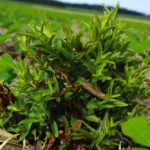
Pest Patrol: Dealing with willowherb
#PestPatrol with Mike Cowbrough, OMAFRA
Reading Time: 2 minutes Q: I’ve noticed small patches of a plant that was identified as “northern willowherb” in some of my fields. It seems tolerant to glyphosate. How do I control this before it becomes a bigger problem? A: This perennial weed has traditionally been found along roadsides and waste areas. In the last five years, more farmers […] Read more

Pest Patrol: Dealing with cleavers
#PestPatrol with Mike Cowbrough, OMAFRA
Reading Time: 2 minutes Q: I had a field of winter wheat with cleavers in it and it was a pain. What is the best way to get rid of this weed in winter wheat? A: I can’t think of a redeeming quality for cleavers, although apparently the fruit is considered one of the best substitutes for coffee (Malik […] Read more

Pest Patrol: Control of Canada fleabane
#PestPatrol with Mike Cowbrough, OMAFRA
Reading Time: 2 minutes Q: Canada fleabane has shown up in various places on our farm this year. I assume it is glyphosate resistant. Do I have any other options for soybeans other than Xtend beans? A: Yes, research conducted by the University of Guelph (Ridgetown Campus) has shown that the addition of Eragon LQ (30 ml/acre) + Sencor […] Read more
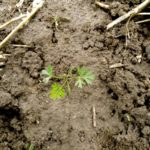
Pest Patrol: Controlling wild carrot in no till
#PestPatrol with Mike Cowbrough, OMAFRA
Reading Time: 3 minutes Q: I am a long-time no tiller. I have a problem with increasing populations of wild carrot, mostly in my (conventional) soybean fields. This year in Roundup Ready corn, I have applied up to three litres of Transorb 540 and still have green carrot at harvest-time. What is the solution? Do I need to do […] Read more

Pest Patrol: Dealing with jimsonweed
#PestPatrol with Mike Cowbrough, OMAFRA
Reading Time: 2 minutes Q: What weed is this, and how do I get rid of it? A: The weed in the picture (Figure 1 above) is jimsonweed (i.e. Datura stamonium), a member of the nightshade family. According to the Canadian Poisonous Plants Information System, jimsonweed “contains toxic tropane alkaloids, which have caused poisoning and death in humans and […] Read more
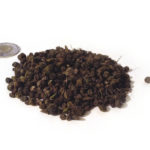
Pest Patrol: Can I feed eastern black nightshade berries to my beef cows?
#PestPatrol with Mike Cowbrough, OMAFRA
Reading Time: 3 minutes [Question]: Find enclosed a sample of oats that I harvested with a considerable amount of eastern black nightshade berries. Is it all right to feed this to my beef cows? [Answer]: If your desire is to have no risk of negative health impacts on your livestock, then do not feed the contaminated oats to your […] Read more

Pest Patrol: What have we learned in 2017 for managing glyphosate-resistant Canada fleabane?
#PestPatrol with Mike Cowbrough, OMAFRA, Dr. Clarence Swanton, Dr. François Tardif and Peter Smith, University of Guelph
Reading Time: 2 minutes Multiple strategies are needed to control glyphosate-resistant Canada fleabane. Experience has taught agronomists and farmers that simply tank mixing another mode of action won’t be a good enough long-term approach. Since 2016, we have evaluated different management tactics for Canada fleabane. The following are the results at our Oxford and Norfolk county field locations. Tillage […] Read more

